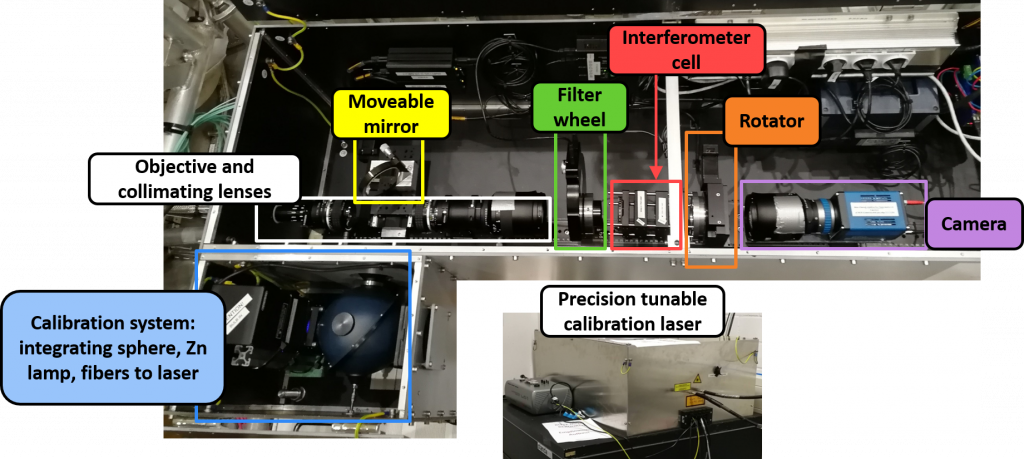Coherence imaging spectroscopy
Our group collaborates with W7-X staff on the development, operation, and scientific utilization of the coherence imaging spectroscopy (CIS) diagnostic on W7-X. CIS is a video-based diagnostic that measures the flow velocity of impurity ions in the scrape-off layer (SOL). The measurements from CIS enable us to study important SOL physics topics, including detachment, particle drift effects, and impurity transport, in the unique island divertor configuration of W7-X.
At the core of the CIS instrument is a polarization interferometer that utilizes birefringent crystals to create an interference pattern overlaid on an image of the plasma emission. Impurity ions in the plasma emit line radiation that is Doppler shifted corresponding to their velocity, resulting in a shift of the interference pattern. Precise measurement of the interference pattern shift can be used to infer ion velocity. CIS has extremely high wavelength resolution (≈1 pm), and because no slit is involved it also has high throughput and spatial resolution.
A unique feature of the W7-X CIS diagnostic is the inclusion of a continuous wave laser (C-WAVE by Hübner Photonics) tunable over most of the visible spectrum (450–650 nm), which calibrates the zero-flow reference point for each CIS instrument before and after every plasma discharge. The calibration laser solves two longstanding challenges with CIS measurements: 1) the lack of available spectral lamps with emission suitably close to the plasma spectral line of interest, and 2) the high sensitivity to ambient temperature. With the laser, CIS can be calibrated at the precise wavelength of the plasma emission line (with an accuracy of better than ±0.1 pm). In addition, calibration immediately before and after every plasma discharge eliminates the need for active temperature stabilization of the interferometer cell because the sensitivity to ambient temperature is accounted for.

Primary Auburn personnel: Matt Kriete and David Ennis
IPP collaborators: Valeria Perseo, Dorothea Gradic, and Ralf König
